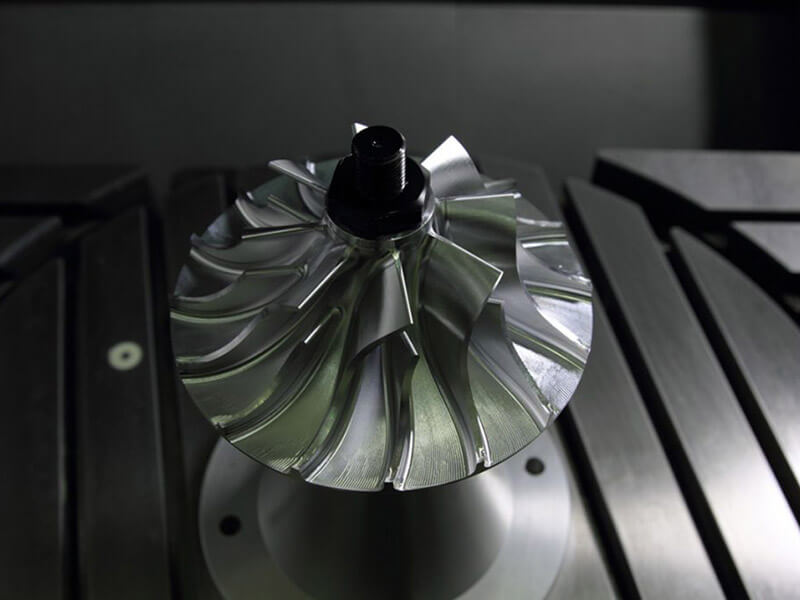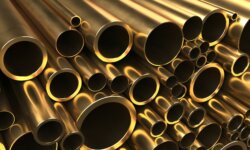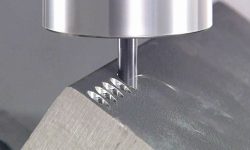Welcome to the fascinating realm of brass, an alloy that has shaped our world for centuries. This comprehensive guide will take you through the brass basics, delving into its history, unique properties, versatile applications, and more. So sit back, relax, and let us embark on a journey through the ages with this timeless alloy.
What is Brass?
Brass is a metal alloy primarily composed of copper and zinc. The precise ratio of these two elements can be adjusted to create a variety of brasses with different properties, making it an incredibly versatile material. Other elements, such as lead, tin, or nickel, can also be added in small quantities to enhance specific characteristics of the alloy.
The Rich History of Brass Usage
The history of brass dates back to ancient civilizations, with artifacts found in various regions, including the Middle East and Europe. It is believed that brass was first created around 5000 BCE when metallurgists accidentally mixed copper and zinc ores during the smelting process.
Brass in the Roman Empire
The Roman Empire played a significant role in popularizing brass as a valuable metal. They called it “Aes” and used it for making coins, statues, and other decorative items. This widespread use of brass helped establish its reputation as a versatile and attractive material.
Medieval Europe (500 – 1500 AD)
Brass production continued during the Middle Ages, with notable centers in Germany, France, and England. In the 12th century, brass production started to flourish in the Low Countries (modern-day Belgium, Netherlands, and Luxembourg), where the brass industry became a significant part of the local economy. Brass was often used in religious artifacts, sculptures, and architectural elements.
The Renaissance (14th – 17th century)
During the Renaissance period, brass was widely used for creating intricate and detailed artworks, including sculptures, engravings, and ornamental pieces.
Brass casting techniques improved, and artists like Donatello, Leonardo da Vinci, and Benvenuto Cellini utilized the alloy in their masterpieces.
The Industrial Revolution (1760 – 1840)
The Industrial Revolution brought about significant advancements in brass manufacturing. The demand for brass increased due to its many applications in various industries, including steam engines, shipbuilding, and telegraph systems.
The development of the rolling mill and extrusion processes allowed for the production of brass sheets, tubes, and rods in large quantities.
Modern era (20th – 21st century)
In the 20th century, brass continued to play an essential role in various industries, particularly in electrical engineering, plumbing, and the automotive industry.
Its use in musical instruments, such as trumpets, trombones, and saxophones, also grew, making brass a central material in the world of music. The alloy has also been employed in decorative objects, such as lamps, door handles, and picture frames.
Physical Properties and Characteristics of Brass
Brass boasts a unique set of properties that make it an ideal choice for various applications:
- Corrosion Resistance: Brass is resistant to tarnishing and corrosion, making it suitable for outdoor and marine environments.
- Malleability: Brass is easily shaped and formed, allowing for intricate designs and easy fabrication.
- Low Friction: Brass exhibits low friction, making it ideal for applications requiring smooth movement, such as gears and bearings.
- Acoustic Properties: Brass has excellent acoustic properties, making it a popular choice for musical instruments like trumpets and saxophones.
- Aesthetics: Brass has a warm, gold-like appearance that can be polished to a high shine or given a more aged, patina finish.
What are The Main Types of Brass?
Brasses can be broadly categorized into two main groups: alpha and alpha-beta brasses.
Alpha Brasses
Alpha brasses contain less than 37% zinc and are characterized by their malleability and ductility. They are commonly used for decorative applications and are easy to work with, making them ideal for artisans and craftsmen.
Alpha-Beta Brasses
Alpha-beta brasses contain more than 37% zinc and exhibit a combination of strength and malleability. These brasses are harder and stronger than alpha brasses, making them suitable for more demanding applications, such as in machinery and hardware.
There are other types like high-zinc beta brass, leaded brass and naval brass. Check our guide on brass types for more information for each one.
What are The Applications of Brass?
Brass has found its way into various industries due to its unique properties and characteristics:
- Musical Instruments: Brass is commonly used in the production of wind instruments like trumpets, trombones, and saxophones, thanks to its acoustic properties and workability.
- Decorative Items: Its warm, golden appearance makes brass a popular choice for decorative items like door handles, light fixtures, and ornaments.
- Plumbing: Brass is used for pipes, valves, and fittings in plumbing systems due to its corrosion resistance and malleability.
- Machinery: The low friction properties of brass make it an ideal material for gears, bearings, and other moving parts in machinery.
- Electrical Components: Brass’s high conductivity and corrosion resistance make it suitable for electrical connectors and switches.
Modern Manufacturing Technologies that Utilize Brass
Due to its excellent properties, brass is preferred in may industries. Here are some common manufacturing technologies that utilize brass:
- Casting: Brass casting is a process where molten brass is poured into a mold to create a specific shape. This method is often used for creating intricate parts such as decorative ornaments, fittings, and sculptures.
- Extrusion: In the extrusion process, brass is heated and forced through a die, creating long, continuous shapes such as tubes, rods, or profiles. This method is commonly used for manufacturing brass hardware, door and window frames, and plumbing components.
- Forging: Brass forging involves heating the metal until it’s malleable and then applying force to shape it. Forged brass components are known for their strength and durability, making them ideal for applications in the automotive, aerospace, and marine industries.
- Stamping: Brass stamping involves the use of a press and dies to cut and shape brass sheets into desired forms. This process is often used for creating small, thin components like electrical contacts, decorative trim, and badges.
- Machining: Brass is known for its excellent machinability, allowing for easy cutting, drilling, milling, and turning processes. Brass is used in machining to create different parts, including gears, valves, fittings, and various precision components.
- Rolling: Brass rolling involves passing the metal through a series of rollers to reduce its thickness and create sheets or strips. These brass sheets are then used for a wide range of applications, such as decorative panels, electrical components, and heat exchangers.
- Drawing: The drawing process involves pulling brass through a die or a series of dies to create tubes, wires, or other elongated shapes. This technique is often used for manufacturing electrical wires, cables, and tubing for various industries.
- Deep Drawing: Deep drawing is a process where a brass sheet is progressively formed into a three-dimensional shape using a series of dies. This technique is used for manufacturing components such as kitchen sinks, brass instrument bells, and automotive parts.
- Spinning: Brass spinning is a process where a flat brass disc is rotated at high speeds and shaped over a mold or form using rollers or tools. This method is used for creating hollow, symmetrical components such as lampshades, decorative bowls, and musical instruments like cymbals.
- Electroplating: In electroplating, a thin layer of brass is deposited onto another metal (usually steel or iron) through an electrochemical process. This method is used to provide a decorative and corrosion-resistant finish on various products, such as faucets, door handles, and light fixtures.
- Brazing: Brazing is a process that involves joining two metals using a filler material, typically brass, that has a lower melting point than the metals being joined. This process is commonly used for creating leak-proof joints in plumbing, HVAC systems, and automotive applications.
- Powder Metallurgy: Powder metallurgy involves compressing brass powder into a desired shape and then heating it to a temperature below its melting point. This process enables the production of complex brass components with high precision and accuracy, making it suitable for applications in the automotive, aerospace, and electronics industries.
- 3D Printing (Additive Manufacturing): Additive manufacturing, or 3D printing, is an emerging technology that enables the creation of complex brass components by depositing material layer by layer. While not as common as other manufacturing processes, 3D printing with brass is gaining traction in industries such as jewelry, art, and aerospace, where intricate and customized parts are needed.
- Wire EDM (Electrical Discharge Machining): Wire EDM is a non-traditional machining process that uses electrical discharges to cut brass and other conductive materials with high precision. This process is suitable for manufacturing complex and intricate brass components that are difficult to produce using conventional machining methods.
- Laser Cutting: Laser cutting is a non-contact process that uses a focused laser beam to cut brass sheets into desired shapes with high precision and accuracy. This method is often used for creating intricate designs and patterns in the decorative, jewelry, and electronics industries.
- Waterjet Cutting: Waterjet cutting is another non-contact cutting process that employs a high-pressure stream of water mixed with abrasive particles to cut brass and other materials. This method is suitable for cutting thick brass sheets and can produce complex shapes with minimal material waste.
Conclusion
Brass is a versatile and timeless alloy that has played a crucial role in human history. Its unique properties, such as corrosion resistance, malleability, and low friction, make it an ideal choice for various applications, ranging from musical instruments to machinery components.
The different types and grades of brass allow for customization, further enhancing its appeal across industries. As a result, brass continues to be a sought-after material in the modern world, proving its enduring value and charm.








